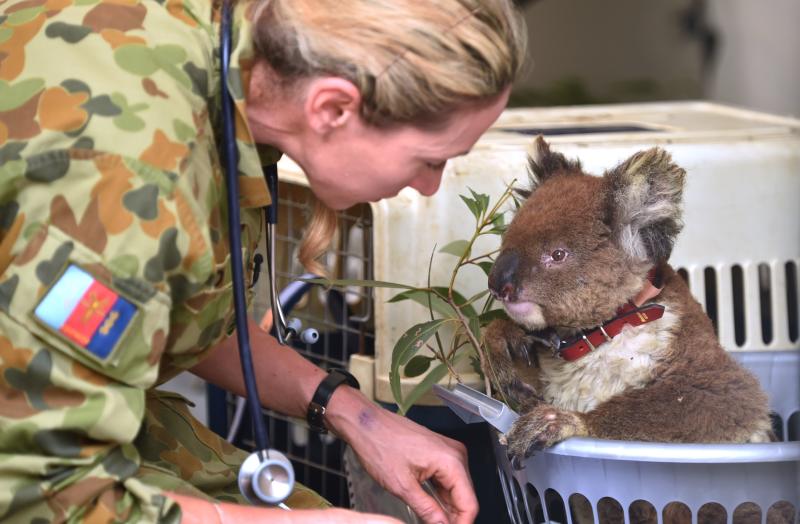Australia's bush fires threaten entire species and ecosystems as more than a billion animals killed
Sign up now: Get insights on Asia's fast-moving developments

The Federal Government this week warned that koalas could be listed as "endangered" in some parts of the country.
PHOTO: AFP
Follow topic:
SYDNEY - Australia's bush fires have taken a devastating toll on wildlife and killed more than a billion animals, raising questions about how - or whether - the nation's natural environment can fully recover.
As fires continue to burn across the continent, experts have warned that the unprecedented scale of the disaster means that some species may have become extinct and that vast swathes of bushland could be transformed into entirely new ecosystems if such events keep happening.
A wildlife and biosecurity expert, Associate Professor Lee Skerratt, from Melbourne University, said the full scale of the damage was not yet known, especially as the fires are still burning and experts are yet to assess affected areas.
"It will take some time to work out the extent of the impact - all we can say is that the extent and severity is something we have never seen before," he told The Straits Times.
"We could have habitat loss and change which will have ongoing effects on wildlife."
Australia's fires have destroyed more than 10 million hectares of bushland - an area larger than South Korea - though the damage may be as much as 17 million hectares. Twenty-eight people have been killed and more than 2,000 homes have been lost.
But the size of the area burnt and the severity of the fires, which have largely eradicated the affected bushland, have left a devastating toll on the nation's wildlife. Australia already had high rates of extinction due to causes such as disease, urban development and habitat loss, and invasive species such as feral cats. Before the fires, it had about 1,770 species of flora and fauna that were listed as threatened or endangered, and many of these will be particularly vulnerable to sudden losses caused by bush fires.
The federal government this week warned that koalas could be listed as "endangered" in some parts of the country. Other species facing an extinction risk due to the fires include the Kangaroo Island dunnart, a small marsupial, and the Southern corroboree frog, a tiny frog found in an alpine region south-west of Sydney. The fate of these creatures may take years to determine as researchers venture to burnt-out bushland to assess the toll.
Scientists have estimated that more than a billion animals - including birds and reptiles, but not fish, bats and invertebrates - and hundreds of billions of insects have been killed. Some species of animals are likely to have become extinct without even being discovered.
One of the scientists behind these estimates is Professor Chris Dickman, from the University of Sydney, who applied a formula devised for a 2007 study he co-wrote on the impact of land-clearing on wildlife. The formula was based on estimates of the density of mammal populations, multiplied by the areas of vegetation that was lost.
"There will almost certainly be species of all geographical ranges and populations that are cooked before we've even had the chance to discover that they exist," Prof Dickman told ABC News last week.
Prof Dickman said the number of invertebrates lost was impossible to estimate but was "undoubtedly in the hundreds of billions". He said invertebrates such as spiders and butterflies play a vital ecological role and help to pollinate, spread soil and provide a food source for larger creatures.
The federal government has committed A$50 million (S$46.4 billion) to assist wildlife affected by the recent fires. This will be used to help carers, hospitals and zoos to assist in the immediate recovery effort, as well as to set up a panel of experts to map affected areas, assess the impact on specific species and prepare for long term restoration of habitats.
For now, firefighters, soldiers, wildlife groups and volunteers have all been working to feed surviving animals and remove carcasses from razed bushland.
Following this recovery phase, Dr Skerratt said, the authorities will have to decide on longer-term solutions. This will include difficult decisions about whether to remove animals from areas where their habitats may no longer sustain them and whether to restore ruined habitats or move animals elsewhere.
"It is a complicated and labour-intensive process that involves health and disease experts, and ecology and other experts," he said.
"This is a severe event, and it is not just a one-off. This is the new climate that we are in."

